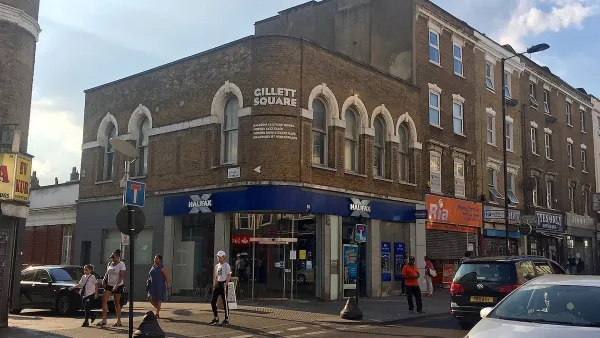Baltimore was only beginning to undo the ill effects of the architecture and planning response to the riots of 1968 when the protests and unrest of 2015 struck. Can the architecture field produce a more positive response to violence this time?
Elizabeth Evitts Dickinson begins a plea for urban designers to do better by noting the ripple effects of an earlier period of unrest in Baltimore.
"After Martin Luther King, Jr. was assassinated in April of '68 and Baltimore rioted, communities near [Maryland Institute College of Art] petitioned the city to rezone the neighborhood as residential only. No more corner stores. No more restaurants. If people could not gather, the thinking went, then they could not riot. Four decades later…witness the ripple effect."
Noting that architecture is in a soul-searching, perhaps soul-defining, moment, Dickinson wonders if the violence and despair of recent events in Baltimore could provide the field with an opportunity for redemption from its past and current mistakes.
"Can our buildings move beyond the soulless structures and aggressive infrastructure that we saw in the wake of '68, and offer instead beauty, civility, and respect? In January, the AIA dubbed 2015 'the year of the advocate,' and challenged members to become legislative activists. Will architects take up the cause of shaping the next American city into one that makes all of us—regardless of race, class, gender, and income—a welcome and vital part of civic life?"
FULL STORY: Architecture's Role in Baltimore

Maui's Vacation Rental Debate Turns Ugly
Verbal attacks, misinformation campaigns and fistfights plague a high-stakes debate to convert thousands of vacation rentals into long-term housing.

Planetizen Federal Action Tracker
A weekly monitor of how Trump’s orders and actions are impacting planners and planning in America.

In Urban Planning, AI Prompting Could be the New Design Thinking
Creativity has long been key to great urban design. What if we see AI as our new creative partner?

King County Supportive Housing Program Offers Hope for Unhoused Residents
The county is taking a ‘Housing First’ approach that prioritizes getting people into housing, then offering wraparound supportive services.

Researchers Use AI to Get Clearer Picture of US Housing
Analysts are using artificial intelligence to supercharge their research by allowing them to comb through data faster. Though these AI tools can be error prone, they save time and housing researchers are optimistic about the future.

Making Shared Micromobility More Inclusive
Cities and shared mobility system operators can do more to include people with disabilities in planning and operations, per a new report.
Urban Design for Planners 1: Software Tools
This six-course series explores essential urban design concepts using open source software and equips planners with the tools they need to participate fully in the urban design process.
Planning for Universal Design
Learn the tools for implementing Universal Design in planning regulations.
planning NEXT
Appalachian Highlands Housing Partners
Mpact (founded as Rail~Volution)
City of Camden Redevelopment Agency
City of Astoria
City of Portland
City of Laramie




























